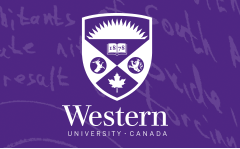Tensions Between Mathematics and other Sciences – Ideal Opportunities to Enrich Teaching Science
Session Type
Presentation
Room
P&A Rm 148
Start Date
July 2015
Keywords
mathematics, applications, teaching science
Primary Threads
Teaching and Learning Science
Abstract
Numerous published papers, conference presentations and panels attest to the need and importance of teaching applications within mathematics courses. I will argue that there is benefit of teaching applications within any science discipline.
By an “application” I mean any context (within science, or broader) which involves or requires some kind of quantitative thinking. For instance, arguments involving risk, chance, or uncertainty use probabilistic concepts. Every time we interpolate or extrapolate from a given set of data we employ functional relationships. In discussing dynamics of drug absorption we use exponential, or more complex mathematical models. Describing viruses infecting certain bacteria, or studying interactions between species in an ecosystem requires that we use mathematics tools.
Mathematics is an abstract discipline, lot more so than other sciences – and hence the tensions I plan to discuss. Every time we discuss a scientific phenomenon, i.e., an application (say, a climate change) using quantitative tools, tensions inevitably show up. They are present in the ways we formulate the problem of our inquiry, in defining objects we study, in the assumptions we make, in the interpretations of results of experiments and mathematical calculations, and elsewhere.
I will argue that, by contrasting the ways these tensions exist and function within each science discipline, we can create rich teaching and learning situations that will deepen our understanding of both math and sciences. Instead of being very abstract, I plan to discuss numerous examples to illustrate these situations.
Elements of Engagement
question, provocation, discussion
Tensions Between Mathematics and other Sciences – Ideal Opportunities to Enrich Teaching Science
P&A Rm 148
Numerous published papers, conference presentations and panels attest to the need and importance of teaching applications within mathematics courses. I will argue that there is benefit of teaching applications within any science discipline.
By an “application” I mean any context (within science, or broader) which involves or requires some kind of quantitative thinking. For instance, arguments involving risk, chance, or uncertainty use probabilistic concepts. Every time we interpolate or extrapolate from a given set of data we employ functional relationships. In discussing dynamics of drug absorption we use exponential, or more complex mathematical models. Describing viruses infecting certain bacteria, or studying interactions between species in an ecosystem requires that we use mathematics tools.
Mathematics is an abstract discipline, lot more so than other sciences – and hence the tensions I plan to discuss. Every time we discuss a scientific phenomenon, i.e., an application (say, a climate change) using quantitative tools, tensions inevitably show up. They are present in the ways we formulate the problem of our inquiry, in defining objects we study, in the assumptions we make, in the interpretations of results of experiments and mathematical calculations, and elsewhere.
I will argue that, by contrasting the ways these tensions exist and function within each science discipline, we can create rich teaching and learning situations that will deepen our understanding of both math and sciences. Instead of being very abstract, I plan to discuss numerous examples to illustrate these situations.

